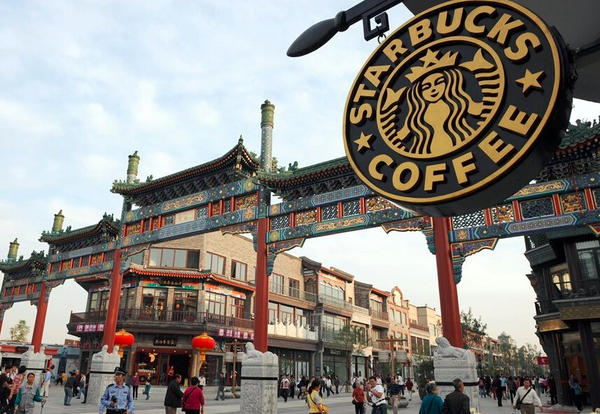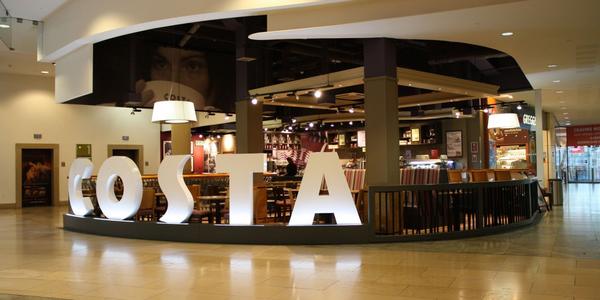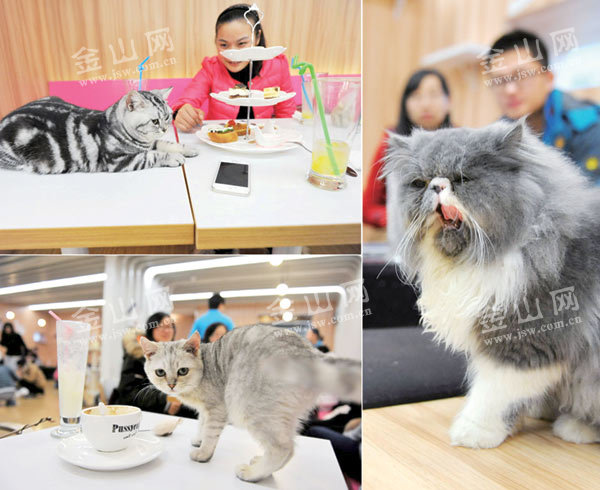An inventory of the Development of International Cafe chains in China
From Best Buy to B & Q, many foreign retail brands have encountered a Waterloo in China, and successful business models in the domestic market cannot be replicated in China. But the international coffee chain is an exception, and although it seems least likely to gain a foothold in China compared with other retail sectors in Western countries, it has been a great success. The Financial Times made an in-depth report on this phenomenon.
Despite thousands of years of tea drinking in China, coffee chains from the US, UK and South Korea have expanded rapidly at home, with sales growing faster than almost any other domestic retail segment. Sales of coffee chains, which were less than 10 billion yuan ($1.6 billion) in 2008, have more than doubled by 2013 and are expected to double to more than 40 billion by 2017, according to Euromonitor.
The rise of Starbucks
Retail analysts say that for China, tea is not only the most popular drink, but also contained in thousands of years of cultural tradition. Starbucks has created a modern coffee culture in China from scratch.
Since opening its first store in China in 1999, Starbucks has been committed to promoting the Western lifestyle and making Starbucks a fashionable place for dating between friends. Today, Starbucks has become one of the most respected life brands in the mainland. Its success has changed the eating habits of Chinese people to a certain extent, driving the growth of freshly ground coffee consumption.
Last year, China Central Television revealed that Starbucks was priced far more in China than abroad, but Starbucks accelerated its pace of expansion. Earlier this month, Starbucks said in a statement that it plans to open at least 3000 stores by 2019, twice the current number.

A market in which a hundred schools of thought contend
As Starbucks accelerates its expansion, the entire coffee market has become more diversified. In the past few years, Korean coffee shops have seized the opportunity to grow rapidly, and many independent coffee shops have emerged in big cities. On the other hand, McDonald's, KFC, Japanese and Taiwan convenience store chains have also launched freshly ground coffee one after another.
Esteban Liang, general manager of the Asia-Pacific region of Costa Coffee, a coffee brand owned by the British group Whitbread, said Costa Coffee plans to open at least 700 stores by 2018-twice as many as Starbucks plans. ManCoffee, which focuses on leisure style, comes from South Korea, and Nian says it wants to accelerate its expansion. It currently has 100 stores in the mainland and plans to double it by 2015.
UBC, a Taiwanese coffee chain, is one of the first coffee brands to enter the Chinese market. UBC employee Frank Yin said in an interview that the more coffee shops there are, the greater the demand for coffee will be in the future. "the emergence of more coffee shops has made people more familiar with coffee culture."
However, as the whole market expanded, UBC was one of the biggest losers. Between 2008 and 2013, Starbucks' market share rose from 12% to 31%, while UBC's market share fell from 33% to 22%, according to Euromonitor.
During this period, McDonald's maintained a 6% market share, despite the opening of 800 new McCaf é stores. Costa Coffee's share grew from 1 per cent to 5.5 per cent. KFC, owned by Yum, has only recently started serving coffee at most of its Chinese mainland stores. At the same time, local convenience stores in many first-tier cities are also selling freshly brewed coffee.

look into the future
Esther Lau, retail analyst at Mintel, said, "looking ahead, there will be fierce competition from South Korea, the United States, the United Kingdom, some local coffee chains and some stylish small coffee shops, making the entire market more diversified and consolidating its extension growth. The per capita coffee consumption in the mainland is only four cups per year, and there is still a lot of room for growth in this market.
The retail partner of Torsten Stocker,AT Kearney Greater China said in an interview, "the competition in the coffee market is bound to become more and more fierce." If you look at Japan and South Korea, cafes are everywhere, and even in Shanghai we don't have that kind of coverage. People's demand for the quality of coffee is much higher than it was five years ago, when coffee was just popular in the mainland, and most people drank sweet instant coffee, such as Nestle three-in-one.
On a recent cold weekday afternoon, in a coffee shop on the outskirts of Shanghai, almost all the 374 seats were full, and friends gathered in small groups to chat loudly. Starbucks, near the office building, is also packed, with some people taking notebooks to work, others meeting with colleagues.
What is even more surprising is that mainland consumers not only patronize coffee shops more and more, but also increasingly like to buy coffee drinks, which have always been popular.
Important Notice :
前街咖啡 FrontStreet Coffee has moved to new addredd:
FrontStreet Coffee Address: 315,Donghua East Road,GuangZhou
Tel:020 38364473
- Prev

The Perspective of crowdfunding "double-edged Sword" from "hundreds of shareholders in a Coffee Shop"
The host said that if a person takes out thousands or tens of thousands of yuan, he can become one of the owners of a restaurant or teahouse or coffee shop. The crowdfunding model makes many dedicated people realize their boss's dream. If 2014 is the first year of crowdfunding, then this entrepreneurial model has grown by leaps and bounds this year. JD.com and Ali have tried the water to set up equity crowdfunding platforms, and traditional securities firms are also gearing up to get a share.
- Next

Is there a phenomenon of unlicensed operation in cat-themed cafes?
Jinshan Network News now many stores are prohibited from pets, but there are several stores in our city in the opposite direction. This new way of consumption has aroused the popularity of pet lovers, but also caused some concern. Recently, the Runzhou District Market Supervision Bureau received a report that two cat-themed cafes were opened in the Wanda apartment building, suspected of operating without a license, and one of them was a nuisance at night.
Related
- What brand of black coffee is the most authentic and delicious? what are the characteristics of the flavor of the authentic Rose Summer Black Coffee?
- Introduction to the principle and characteristics of the correct use of mocha pot A detailed course of mocha pot brewing coffee is described in five steps.
- Which is better, decaf or regular coffee? how is decaf made?
- How much is a bag of four cat coffee?
- How about four Cat Coffee or Nestle Coffee? why is it a cheap scam?
- Which is better, Yunnan four Cats Coffee or Nestle Coffee? How about cat coffee? is it a fake scam? why is it so cheap?
- How about Cat Coffee? what grade is a hoax? which instant coffee tastes better, four Cat Coffee, Nestle Coffee or G7 coffee?
- Process flow chart of coffee making-Starbucks coffee making process what coffee tastes good at Starbucks
- The top ten best coffee beans in the world Rose summer coffee or Tanzanian coffee tastes good
- Yunnan four cat coffee is good to drink?_four cat coffee is a big brand? four cat blue mountain coffee is fake?

